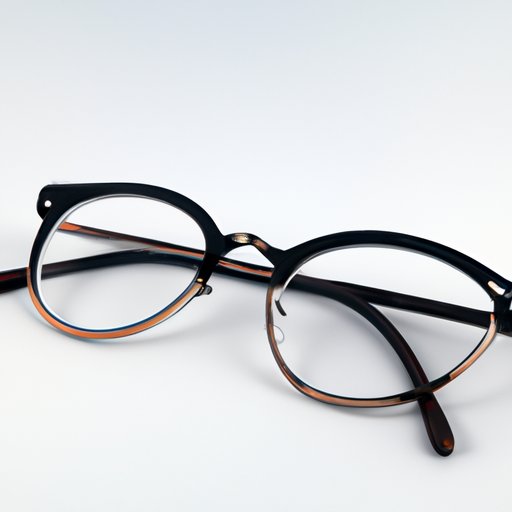
Introduction
Vision problems can be frustrating and even debilitating in daily life. When difficulty arises in seeing the world around us, it can lead to a range of problems from headaches to accidents which makes operating everyday tasks difficult. If you’re experiencing vision problems, you may need glasses. In this article, we’ll explore the most common signs of vision problems, the importance of regular check-ups, why reading glasses might be necessary, how to tell if your child needs glasses, the different types of glasses available, and how to find the right pair of glasses.
Exploring the Most Common Signs of Vision Problems
One of the most common signs of vision problems is blurred vision. Blurry vision can manifest itself as a difficulty in seeing clearly both up close and far away, which can strain your eyes.
Another warning sign of vision problems is difficulties seeing at night or adjusting to light. This could come in many forms – many people find they start seeing halos around headlights while driving, leading to a significant increase in eye strain.
Headaches are also a common warning sign of vision problems. When you have trouble seeing, especially when you’re looking at bright screens, your eyes can work too hard and result in headaches.
Importance of Regular Check-Ups
Some people think that if their eyes feel fine, then there is no need to schedule an eye check-up. However, it is essential to have regular check-ups with an optometrist, even if your vision feels fine. Many underlying problems may not show themselves in a noticeable way until the situation has escalated to a point where treatment may be limited or non-existent.
An eye exam can do more than just determine whether you need glasses or contacts – it can identify underlying issues like hypertension, diabetes, cataracts, and glaucoma. We recommend you schedule an exam once every 2 years, or more frequently if you have hypertension or diabetes or if you have a family history of these or glaucoma.
Reasons Why Reading Glasses Might Be Necessary
As we grow older, our eyesight can start to decline, making it harder to read, recognize faces, and even complete everyday tasks. Presbyopia is a term used to describe the typical loss of near, focussed eyesight due to our ageing eyes.
As it becomes more prevalent, reading glasses may be required to help you see better. Symptoms include difficulty seeing small print or blurry text, headaches, and eye strain. Reading glasses can help by magnifying printed words, making them look more prominent, and thus making it easier to read small text.
How to Tell if Your Child Needs Glasses
Children may not always know they need glasses, so it’s up to parents to recognize the signs. Some common signs and symptoms of vision problems in children include squinting to see, consistently holding a book or phone too close to their face, and complaints of blurry vision.
Additionally, they may experience significant headaches or general eye strain. In most cases, children with vision problems will have visible signs of crossed or toed-out eyes or low vision in one or both eyes, so it’s advisable to observe your child and speak with a paediatrician or an optometrist.
Exploring the Different Types of Glasses Available
Single vision lenses are the most common type of glasses and suitable for people who require a single prescription. Bifocals feature two focal points on the same lens, making them suitable for people who need both distance and near vision. Finally, progressive lenses are a type of bifocal that feature a range of lens powers to allow for smooth transitions between different visual distances.
The pros of single vision lenses are that they are the most affordable and are easy to use. Bifocals have no visible line in the lens and make switching between near and far vision natural. Progressive lenses are the most convenient option, ensuring a smoother transition between distances, but they may take some time to get used to.
How to Find the Right Pair of Glasses
When it comes to finding the perfect pair of glasses, selecting the right shape, style, and the material is the first step. For example, if you require glasses for work or an active lifestyle, you’ll want to choose materials that can withstand wear and tear.
The second step is to select glasses that are appropriate for your specific type of vision impairment. If you have nearsightedness, round glasses with a flat surface are advisable. For people with farsightedness, oval-shaped glasses are typically recommended.
Finally, don’t forget to consider fashion when selecting the right pair of glasses. The wrong style that doesn’t fit the wearer’s personality can be both uncomfortable and unflattering, ultimately affecting their eyesight and overall confidence.
Conclusion
Recognizing the signs of vision problems is crucial for maintaining healthy eyes, and regular check-ups with an optometrist can keep your eyes healthy and well-maintained. If you suspect you or your child needs glasses, don’t hesitate to explore the options available, from single vision lenses to creative and functional frames. By finding the right glasses for your eyes and your style, you’ll be able to see the world in a whole new way.




